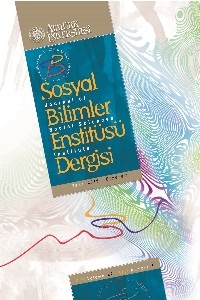Abstract
The aim of this study is to investigate
students’ readiness level towards online English courses given in higher
education. A Likert type questionnaire was used to explore whether students
were ready to take English courses online. The data was descriptively analysed
with the statistical programme, SPSS 20. Results showed that most of the
students have enough computer and smartphone skills to follow courses online. Despite
their skills, most students do not know how to use Learning Management System
(LMS) effectively. Moreover, their attitudes towards teaching and learning
English online is quite diverse. While some learners favour online instruction,
others do not as they think it is ineffective. A great majority of students
place a high value on learning English, but they do not know how to design a
study plan. Being an autonomous learner is a prerequisite for success in higher
education, and the study found that many students at tertiary level lack that
trait.
References
- Balçıkanlı, C. (2010). “Learner Autonomy in Language Learning: Student Teachers’ Beliefs”. Australian Journal of Teacher Education, 35(8), 90-103.
- Basal, A. (2015). “The Implementation of a Flipped Classroom in Foreign Language Teaching”. Turkish Online Journal of Distance Education-TOJDE. 33.
- Debela, N. (2004). “A Closer Look at Distance Learning from Students’ Perspective: a Qualitative Analysis of Web based Online Courses”, Systemics, Cybernetics and Informatics 2, 87-90.
- Enfield, J. (2013). “Looking at the impact of the flipped classroom model of instruction on undergraduate multimedia students at CSUN”. Techtrends, 22.
- Hubbard, P. (Ed.) (2009). Computer Assisted Language Learning: Vol 1, Critical Concepts in Linguistics. London: Routledge.
- Ismail, A., Almekhlafi, A. & Al-Mekhlafy, M. (2010). “Teachers’ Perceptions of the use of Technology in Teaching Languages in United Arab Emirates’ Schools”, International Journal for Research in Education. 1.
- Kenny, B., (1993) “For more autonomy”. System. 431-442.
- Little, D., (2007) “Language Learner Autonomy: Some Fundamental Considerations Revisited”. Innovations in Learning and Teaching. 15.
- Mehta, N. K., (2012). “Mobile Phone Technology in English Teaching: Causes & Concerns by Naveen K Mehta, Mobile Phone Technology in English Teaching: Causes & Concerns”. MJAL. 82
- Mouhadjer, N. (2013). “Online Video-Based Interaction: A Learning Arrangement for English Language Teaching”, Global Partners in Education Journal, 3, 22-35.
- Pacheco, A. Q., (2005). “Web-Based Learning (WBL): A Challenge for Foreign Language Teachers”, Revista Electrónica “Actualidades Investigativas en Educación. 2.
- Peacock, M. (2013). [foreword] Innovations in Learning Technologies for English Language Teaching. Motteram G. (Ed.). 2.
- Ram, A.R., Chaudhuri S. (2012). Video Analysis and Repacking for Distance Education [Electronic form]. New York: Springer Science+Business Media.
- Sarre, C. (2011). “Computer - Mediated Negotiated Interactions: How is Meaning Negotiated in Discussion Boards, Text Chat and VideoConferencing?” In S. Thouësny & L. Bradley (Eds.), Second Language Teaching and Learning With Technology: Views of Emergent Researchers. Dublin: Research-publishing.net. 189-210.
- Shawcross, P. (2004). Technology in Language Teaching, ICAO Aviation Language Symposium [Powerpoint Slides]
- Shyamlee, S. D. and Phil, M. (2012). “Use of Technology in English Language and Teaching and Learning: An Analysis”, International Proceedings of Economics Development and Research. 150.
- Viatonu, O., Kayode, E. T. (2012). “Improve the Teaching and Learning of English Langauge Through the use of Information and Communication Technology: Prospects and Challenges”
- Zainuddin, Z., Halili, S. H., (2015). “Flipping the Classroom: What we Know and What we don't”, The Online Journal of Distance Education and e‐Learning. 15.
Details
| Primary Language | English |
|---|---|
| Journal Section | Makaleler |
| Authors | |
| Publication Date | June 15, 2019 |
| Published in Issue | Year 2019 Volume: 23 Issue: 2 |

